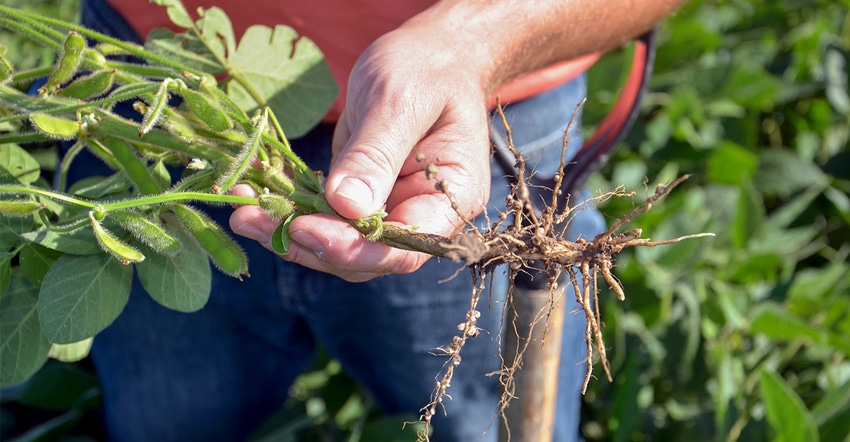
Steve Gauck believes in early planting for soybeans as much as anyone. Both university and company data point to unmistakable advantage in yield over time for soybeans planted from mid- to late April through early to mid-May.
Gauck is a sales agronomist for Beck’s. Beck’s is the sponsor of Soybean Watch ’17. Results from years of testing in Beck’s Practical Farm Research plots shows a clear advantage for planting soybeans early, especially compared to planting them in late May or early June.
The key word in all of this may be “average,” as in averaged over several years. In any one season in any given circumstance, it’s possible that if weather conditions are favorable, late-planted soybeans could still perform well.
Here’s a case in point: Nearly 40 years ago, a farmer was delayed by rains and couldn’t plant soybeans until June 20. He drilled a popular variety with a conventional grain drill. The field averaged over 53 bushels per acre, a solid yield for back then. Did that mean he shifted his target planting date for soybeans to June 20 every year? No. He realized many factors went his way in that one year.
While it’s too early to say, and may depend heavily on late-season rainfall, Gauck says the Soybean Watch ’17 field could still perform well, even though it was planted June 6 after long weather delays.
“Soybeans were still putting out new leaves and even still flowering when I checked them in mid-August,” he recalls. “I dug up some roots and found a considerable number of nitrogen nodules.”
These nodules contain rhizobium bacteria that live on the roots and convert nitrogen from the atmosphere into nitrogen the soybean plant can use.
“Many of them, especially the younger ones toward the outer edges of the roots, were pink on the inside,” Gauck says. “That means they were still active and still producing nitrogen.”
Plus factors
Besides still being healthy relatively late in the season, Gauck says the Soybean Watch field has some other pluses that may help it produce a reasonable yield in spite of a relatively late planting date. First, the field was planted with a split-row planter in 15-inch rows, so that helped close the canopy sooner than if it was in 30-inch rows.
“Slugs were a problem in many areas this spring,” he says. “Many fields had to be replanted at least once, and sometimes twice, due to slugs. This field had slugs, but it was late enough that a reasonable stand survived. Earlier in the year I determined that even in the weaker spots, there were 80,000 plants per acre. That is adequate to reach full potential.”
Because the stand was thinner, plants tended to branch more. “I found many plants with three branches with pods that will produce beans,” Gauck says.
The other factor is disease. “We didn’t see much out here so far,” he notes. “The last time I visited, I was beginning to see sudden death syndrome in early-planted fields, but not here. It likely has to do with timing.”
About the Author(s)
You May Also Like




